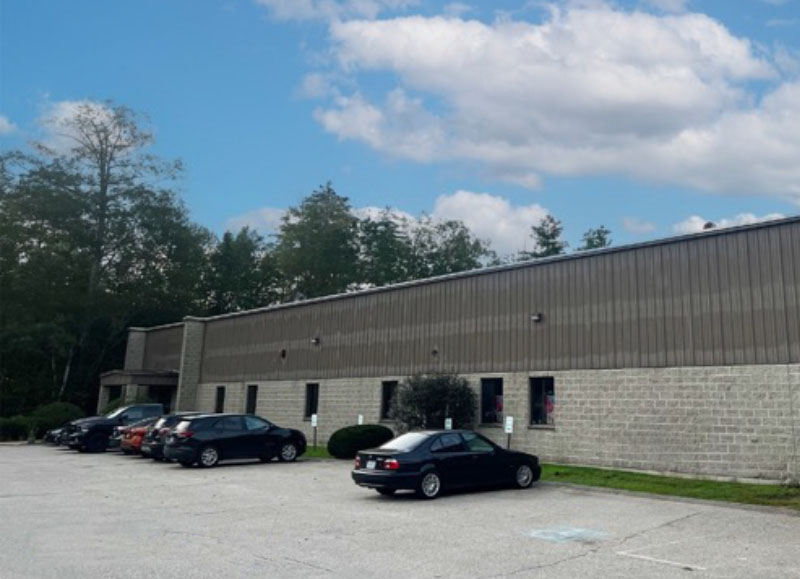News: Northern New England
Posted: May 1, 2015
It's spring - time to lock out ice dams and protect your office or commercial building
Spring has sprung, and most people would rather not think about the brutal winter, punishing cold, and record snowfall behind us. However, if this past winter resulted in ice dams (as evidenced by thick icicles hanging from the eaves) or roof damage to your office or commercial building, now is the time to act.
As annoying and destructive as ice dams are, they can often be eliminated. Although you'll need to invest some money, fixing the problem is much less expensive than dealing with water damage, insurance claims, and mold issues.
Ice dams are caused when heat that escapes from the building melts the snow closest to the roof. This thin layer of water does not refreeze along the upper part of the roof because the snow above it acts as an insulating blanket. The water then runs down the roof slope and refreezes at the cold eave line. Over time, this ice builds up and causes ice damming. The water running down eventually backs up. On a shingle roof, the water will back up under the shingles and into the building. Water starts to pond on flat roofs and causes internal ice damming at the roof drains. These conditions are particularly common during a winter like the one we just experienced in New England: lots of snowfall followed by periods of extreme cold.
While icicles and ice dams are pretty on greeting cards, aside from the potential damage they cause, they are also safety hazards to traffic, pedestrians, and customers below. The solution is often found in adding better and/or more insulation. Ice dams are caused by heat loss (and the accumulation of snow on a roof), so deterring heat loss through the building envelope will largely eliminate ice dams and also save money on your energy bills. In some types of roofs, it's also important to properly ventilate the roof and/or attic. This allows cold outside air to flow under the roof surface, which keeps it cold.
The American Society of Heating, Refrigerating and Air-Conditioning Engineers (ASHRAE) describes a concept called "continuous insulation," or insulation that is "continuous across all structural members without thermal bridges other than fasteners and service openings. It is installed on the interior, the exterior, or... any opaque surface of the building envelope."
Open cell, low-density spray foam insulation is often a good way to achieve this continuous insulation (vs. batting like the pink stuff we all knew growing up) because of its thermal performance, amazing air sealing qualities, ease of application, and affordability. Open-cell foam has been the insulation of choice for commercial building contractors for a quarter century. This spray foam insulation is usually applied with a hand-held gun from a hose connected to a truck. The foam is specially designed to conform to the shape of the applied surface.
Open cell insulation stops or slows heat transfer. It can seal tightly around edges and penetrations from plumbing, telecom cables, fixtures, lighting, wiring, etc., and has good vapor permeability. It is also mold resistant, and absorbs sound pretty well as an added benefit.
The beauty of open cell spray foam is that it fills gaps that rigid foam or batt insulation can't get to and it won't settle or sag. In fact, even if the building settles, its flexibility conforms to the change. It also prevents air from flowing through it, essentially serving double-duty as a way to air seal and insulate. Its qualities help eliminate moisture from walls and ceiling cavities, too.
According to the National Research Council of Canada, spray foam consistently scored better than fibrous insulation, performing at more than 90% of nominal R-value compared to fibrous insulation, which scored in the range of 35 to 65% of nominal R-value. It's important to understand that the published R-value of an insulation material is determined under laboratory conditions. When fiberglass insulation sags and/or there is airflow through it, the R-value decreases significantly.
Rigid foam insulation also works in some applications. The key is simply to practice continuous insulation, which can reduce your energy consumption and provide quick pay-back.
Plan to keep your roof cold next winter, too. The Insurance Institute for Business and Home Safety suggests that when the roof is dry, inspect the roof cover for evidence of long-term standing water including the presence of mold, mildew, or even vegetation growing. This indicates a problem with the slope of the roof cover system, reducing proper water shed and drainage. The cover system can often be re-pitched with additional insulation boards installed by a roof contractor. The Insurance Institute also recommends removing or relocating heat sources directly under a roof such as a mechanical room or attic, which can also cause ice dams. If there was extensive ice built-up around the roof drains, consult a roof contractor to ensure the roof cover system is adequately sloped.
Another solution to explore with your building contractor is to install thermostat regulated electric power vents to keep attics ventilated. This in turn keeps the roof surface cold.
Oftentimes, people want to install self-regulating heating cable to melt the ice on their roof. While this approach can prevent ice damming, it really doesn't fix the problem. In fact, it increases energy usage in a building due to the electrical power required for it to run.
The damage was done.
Now what?
If you experienced ice dams last winter, and water leaked through your roof, the insulation may have gotten wet and any loose or batted insulation has likely lost some of its insulating properties. That means you're likely to get ice dams again next year, so be sure to check and be prepared to add to or replace your insulation. Moisture may also be trapped in your walls, causing mold. Framing structures can slowly rot if untreated, and air quality can suffer.
One tell-tale sign of damage is peeling paint and obvious ceiling or wall stains. Check your gutters for damage too. So what should you do? Aside from fixing the cause of the problem - insufficient insulation - consider a team approach, working with roof, HVAC, and energy efficiency contractors to mitigate problem areas, determine the extent of the damage, and create an action plan.
It's important to consult with a professional to get your building evaluated. Ice dams and other building envelope problems can be complex issues to deal with and this article is only intended to give an overview and to promote awareness. Don't wait until the fall. Plan to take action today, so you'll be prepared next winter. Now start planning for those coveted beach days.
Todd Chase is president of Viridis Engineering, Gorham, Me.
Tags:
Northern New England
MORE FROM Northern New England
PROCON and Hitchiner break ground on 57,000 s/f shared services operations facility
Milford, NH Hitchiner, in partnership with PROCON’s integrated design and construction team, has officially broken ground on a new 57,000 s/f shared services operations facility at its Elm St. campus. This building will house value-added services used across Hitchiner’s various business units,








